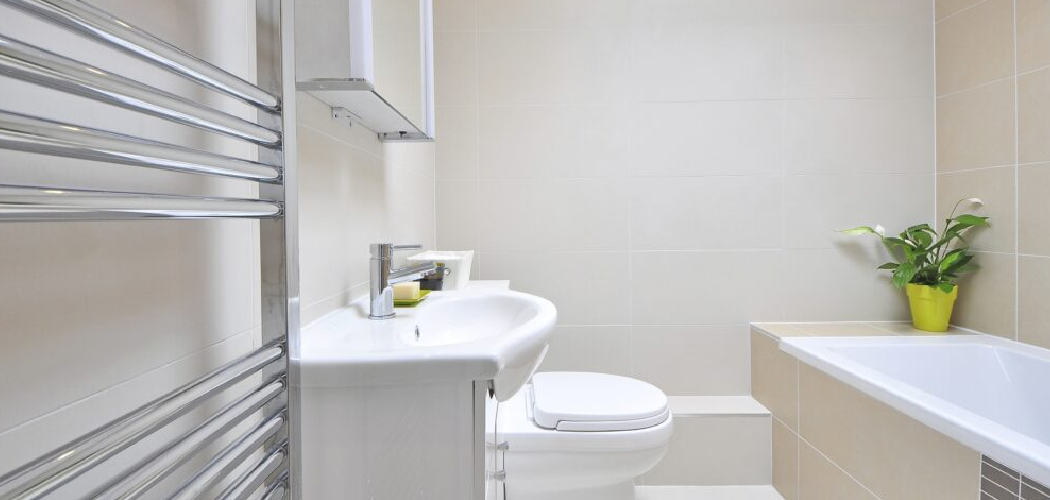If you’re a homeowner, chances are you’ve run into a few issues with your bathroom heater. Whether it’s stopped working altogether or it’s just not producing the amount of heat that you need, a broken heater can be a major inconvenience. Luckily, many common bathroom heater problems can easily be fixed without having to call in a professional.
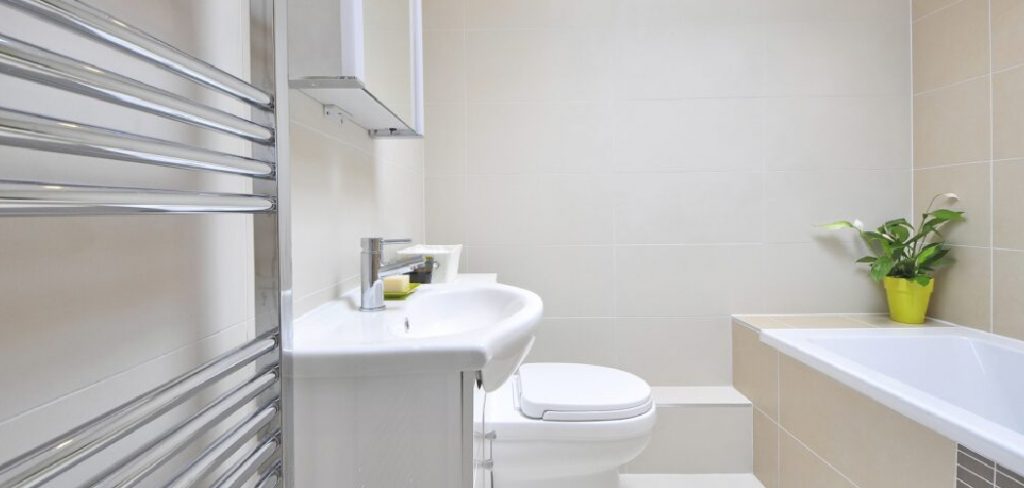
In this guide, we will walk you through some simple steps on how to fix heater in bathroom and get it back up and running in no time.
Necessary Items
Before you begin troubleshooting your bathroom heater, make sure you have the following items on hand:
- Screwdriver (depending on the type of heater)
- Replacement bulbs (if applicable)
- Multimeter (optional but helpful for more advanced troubleshooting)
8 Troubleshooting Common Heater Issues
1) Heater Not Turning On
If your bathroom heater is not turning on at all, the first thing you should check is the power source. Make sure that it’s plugged in securely and that the outlet is functioning properly. Next, check the thermostat to see if it’s set to a high enough temperature. If it’s set too low, the heater may not turn on. If the power source and thermostat are not the issue, it may be a problem with the heating element or wiring.
2) Inadequate Heat Output
If your bathroom heater is turning on but not producing enough heat, there could be a few different causes. First, check to make sure that the heating element is clean and free of debris. Buildup can prevent the heater from properly heating up. If the heating element is clean, it may be time to replace it. Additionally, check that the thermostat is set to a high enough temperature and that the fan is functioning properly.
3) Loud or Strange Noises
If your bathroom heater is making loud or unusual noises, there may be an issue with the blower motor or fan. Check for any obstructions in the fan blades and clean them if necessary. If there are no visible issues, it may be a problem with the motor itself, and you may need to replace it.
4) Heater Not Blowing Air
If your bathroom heater is turning on but not blowing air, there could be an issue with the blower motor or fan. Check for any obstructions in the fan blades and clean them if necessary. If there are no visible issues, it may be a problem with the motor itself, and you may need to replace it.
5) The Heater Not Heating Up at All
If your bathroom heater is not producing any heat at all, the issue may lie with the heating element or thermostat. First, check the thermostat to ensure it’s set to a high enough temperature. If it is and there is still no heat, then the heating element may need to be replaced.
6) Burnt Smell
If you notice a burnt smell coming from your bathroom heater, immediately turn it off and unplug it. This could be a sign of an electrical problem or a damaged heating element. In this case, it’s best to have a professional inspect and repair the heater.
7) Water Leaking
If you have an electric heater, water leakage may be a sign of a broken heating element or corroded wiring. In this case, it’s best to turn off the power source and call a professional for repairs. Also, check for any visible cracks or damage to the heater unit itself.
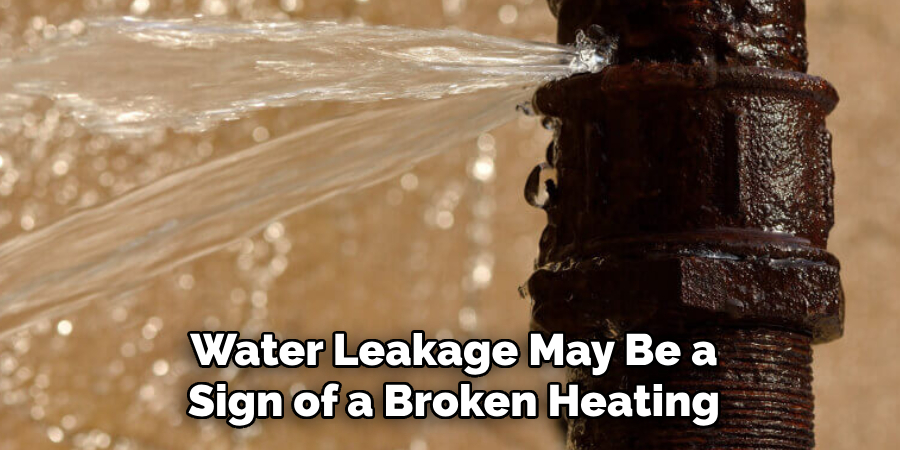
8) The Thermostat Not Working
If your bathroom heater is not responding to changes in the thermostat setting, there may be an issue with the thermostat itself. You can try changing the batteries if they are battery-operated, but if that doesn’t work, you may need to replace the entire thermostat unit.
Bathroom heater problems can be frustrating, but with these troubleshooting steps, you should be able to fix the most common issues on your own. Remember to always turn off the power source and use caution when working with electrical components. If you encounter a more complex issue or don’t feel comfortable attempting repairs yourself, it’s best to call a professional for assistance.
12 Steps on How to Fix Heater in Bathroom
Step 1: Check the Power Source
The first thing to do when your bathroom heater isn’t working is to check the power source. Make sure the unit is plugged in and that the outlet is working properly. If it’s a hardwired unit, double-check the circuit breaker to make sure it has yet to be tripped.
Step 2: Check for Any Obstructions
Next, take a look at your bathroom heater and make sure there are no obstructions blocking the airflow. This could include dust, debris, or even furniture blocking the vents. If you have a wall-mounted heater, make sure that the vents are not obstructed by any decorations or fixtures.
Step 3: Clean the Heating Element
If your bathroom heater has been running for a while without being cleaned, it’s possible that there is a buildup on the heating element. This can prevent the unit from producing enough heat. Use a soft cloth to gently clean the element and remove any buildup.
Step 4: Replace Bulbs (If Applicable)
Some bathroom heaters have bulbs that need to be replaced periodically. If your heater has a bulb, check to see if it needs to be replaced. Consult your owner’s manual for instructions on how to properly change the bulb.
Step 5: Use a Multimeter (For Advanced Troubleshooting)
If you have a multimeter, you can use it to test the voltage and continuity of different components in your bathroom heater. This is helpful for more complex issues and can help pinpoint the source of the problem.
Step 6: Check the Thermostat
If your bathroom heater has a thermostat, make sure that it’s set to a temperature high enough for the unit to turn on. If it’s set too low, the heater may not activate.
Step 7: Replace the Heating Element
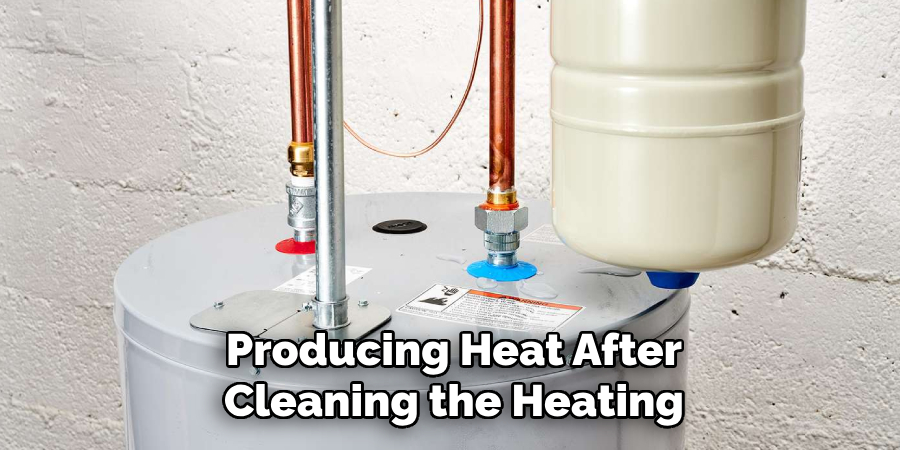
If your bathroom heater is still not producing heat after cleaning the heating element and checking the thermostat, it may be time to replace the heating element altogether. Refer to your owner’s manual or consult a professional for guidance on how to properly replace the heating element.
Step 8: Check for Any Loose Connections
Loose connections can also cause issues with your bathroom heater. Take a look at all of the wires and connections and make sure they are secure. While doing this, also check for any visible damage to the wires.
Step 9: Inspect the Blower Motor
If your bathroom heater is making loud or strange noises, there may be an issue with the blower motor. Check for any obstructions and clean the fan blades if necessary. If there are no visible issues, you may need to replace the motor. Refer to your owner’s manual or consult a professional for guidance.
Step 10: Replace the Thermostat
If your bathroom heater is not responding to changes in the thermostat setting, you may need to replace the entire unit. Consult your owner’s manual or call a professional for assistance with replacing the thermostat.
Step 11: Call a Professional (If Needed)
If you’ve tried all of the above steps and your bathroom heater still isn’t working, it may be time to call a professional. They will have the expertise and tools to diagnose and fix more complex issues. But make sure to do your research and choose a reputable and experienced professional.
Step 12: Regular Maintenance
To prevent future issues with your bathroom heater, it’s important to perform regular maintenance. This includes cleaning the unit, checking for any loose connections or obstructions, and replacing any necessary components. By regularly maintaining your bathroom heater, you can prolong its lifespan and avoid unexpected breakdowns.
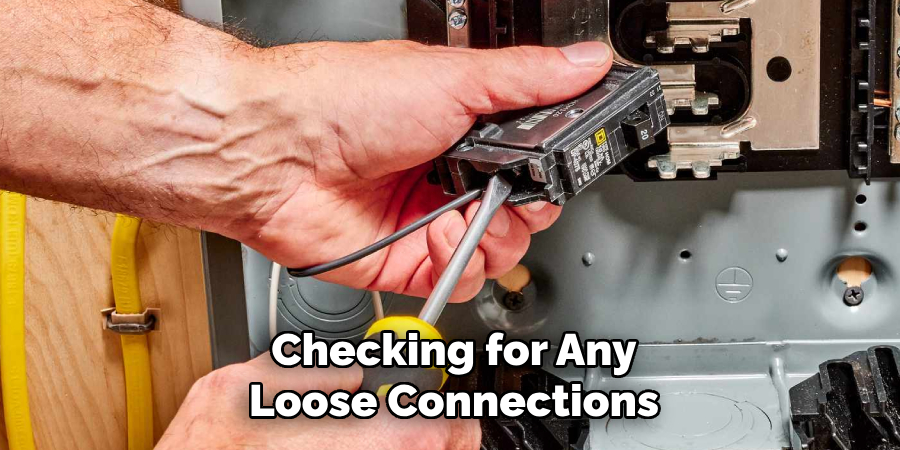
Keep these steps on how to fix heater in bathroom in mind, and you’ll have a warm and functional bathroom heater all year round! Remember, safety should always be your top priority when dealing with any electrical appliances. If you encounter a problem that you are not comfortable handling on your own, it’s best to call a professional for assistance.
8 Things to Avoid to Prevent Bathroom Heater Issues
1) Overloading the Outlet
Make sure not to plug in too many appliances into one outlet, as this can cause overheating and damage to your bathroom heater. Never use extension cords with your heater, as they can also cause overheating and create a fire hazard.
2) Using Improper Cleaning Products
When cleaning your bathroom heater, make sure to only use products that are safe for electrical components. Harsh chemicals can damage the unit and potentially cause it to malfunction. However, using a soft cloth and gentle cleaning solution can effectively remove any buildup without causing harm.
3) Ignoring Strange Noises or Smells
If your bathroom heater is making unusual noises or emitting strange smells, it’s important to address the issue immediately. These could be signs of a potential problem that needs to be fixed before it escalates.
4) Not Performing Regular Maintenance
As mentioned before, regular maintenance is crucial in preventing bathroom heater issues. Neglecting to clean and check for any potential problems can lead to breakdowns and costly repairs.
5) Using the Heater in Damp/Wet Environments
Bathroom heaters are designed for use in a dry environment. Using them in a damp or wet environment, such as a steamy bathroom, can cause damage to the unit and create safety hazards. So always make sure your bathroom is properly ventilated before using the heater.
6) Blocking the Vents

Blocked vents not only reduce the efficiency of your bathroom heater but can also cause it to overheat and potentially start a fire. Make sure to keep all vents clear and unobstructed at all times. While it may be tempting to decorate the unit, avoid placing any objects on or around the vents.
7) Not Reading the Owner’s Manual
The owner’s manual is a valuable resource that provides important information about your specific bathroom heater. Always take the time to read and understand it before using or troubleshooting your heater. This can prevent potential issues and ensure proper usage of the unit.
8) Neglecting to Replace Old/Broken Parts
If you notice any damaged or worn-out components in your bathroom heater, it’s important to replace them right away. Ignoring these issues can lead to bigger problems and compromise the safety of the unit. Always refer to the owner’s manual for guidance on how to properly replace parts.
By avoiding these common mistakes on how to fix heater in bathroom, you can maintain a safe and functional bathroom heater for years to come. Remember to always prioritize safety and consult a professional if needed.
8 Additional Tips for Effective Bathroom Heater Usage
1) Use a Timer
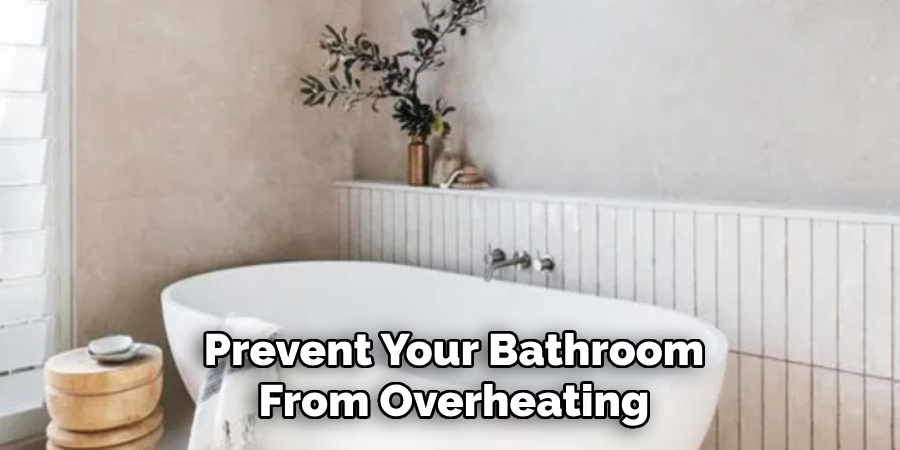
Using a timer can help save energy and prevent your bathroom from overheating. Set the heater to turn on a few minutes before you plan to use the bathroom and shut it off shortly after. While it may be tempting to leave the heater on all day, this can lead to higher energy bills and unnecessary wear on the unit.
2) Keep Doors Closed
Closing your bathroom door while using the heater can help contain the heat and make your bathroom feel warmer. This is especially helpful in larger bathrooms or if you have a drafty window in your bathroom. Just make sure to keep the door open after use to allow proper ventilation.
3) Use a Floor Mat
Placing a floor mat in front of your bathroom heater can help absorb any excess moisture and prevent slips or falls. This is especially useful if you have children or elderly individuals using the bathroom.
4) Consider Adding a Ceiling Fan
If your bathroom has a high ceiling, consider installing a ceiling fan to help distribute the heat more evenly. This can also prevent excess moisture buildup and mold growth. If you already have a ceiling fan, make sure to run it in the opposite direction during colder months to push warm air down.

5) Opt for Energy-Efficient Models
When purchasing a new bathroom heater, consider opting for energy-efficient models. These can help save on energy bills and are better for the environment. Look for heaters with an Energy Star label or high energy efficiency ratings.
6) Use a Programmable Thermostat
Using a programmable thermostat with your bathroom heater can help save energy by allowing you to set specific times for the unit to turn on and off. This is especially useful if you have a regular routine or are often out of the house.
7) Consider Investing in a Heated Towel Rack
A heated towel rack not only adds extra warmth to your bathroom but can also help dry towels faster. This can save you time and energy from constantly washing and drying towels. Therefore, it’s a win-win investment for both your bathroom and wallet.
8) Don’t Leave Children Unattended
It’s important to never leave children unattended in the bathroom when the heater is on. Not only can they accidentally touch or play with the unit, but they may also need to remember to turn it off after use. Always supervise children and teach them proper safety precautions when using the bathroom heater.
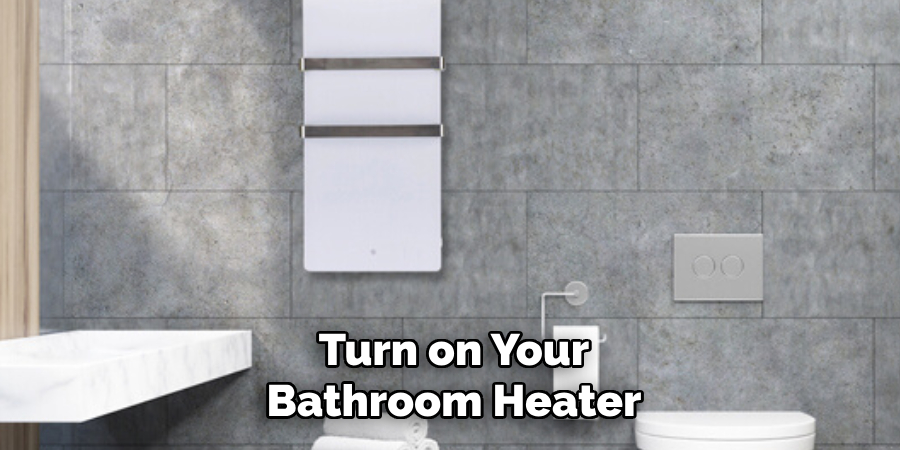
From avoiding common mistakes to utilizing additional tips, these actions can help ensure safe and efficient usage of your bathroom heater. Remember to always prioritize safety and regularly maintain your unit for long-lasting functionality. So next time you turn on your bathroom heater, do it with confidence, knowing that you are taking the necessary steps to prevent any potential issues.
Frequently Asked Questions
What Type of Heater is Allowed in a Bathroom?
Electric bathroom heaters are the safest and most common type of heater used in bathrooms. They do not produce dangerous fumes and can be easily installed on an existing electrical circuit.
Can I Use an Electric Heater in a Wet Bathroom?
It’s not recommended to use an electric heater in a wet bathroom as it could be hazardous. Instead, consider installing a wall-mounted or ceiling-mounted fan heater specifically designed for use in wet environments.
Can I Use a Bathroom Heater in Other Rooms?
Most bathroom heaters are not suitable for use in other rooms due to their size and intended usage. It’s best to purchase a separate heater for other areas of your home.
How Often Should I Clean My Bathroom Heater?
A: It’s recommended that you clean your bathroom heater at least once a month to prevent buildup and dust accumulation. However, if you notice any unusual noises or smells, it’s best to clean the unit immediately.
Can I Use a Space Heater in My Bathroom?
A: It’s not recommended to use space heaters in the bathroom as they are not designed for wet environments and can be dangerous. Stick to using a specifically designed bathroom heater for safety purposes.
What Should I Do if My Bathroom Heater Stops Working?
A: If your bathroom heater stops working, first check the circuit breaker to make sure it hasn’t tripped. If that’s not the issue, refer to the owner’s manual for troubleshooting tips or contact a professional for assistance. Avoid trying to fix the unit yourself, as it can be dangerous and void any warranty.
Conclusion
In conclusion, proper usage and maintenance of your bathroom heater are crucial for safety and efficiency. By avoiding common mistakes, utilizing additional tips, and staying informed on safety precautions, you can ensure a warm and comfortable bathroom experience.
Always prioritize safety and consult a professional if needed to ensure the longevity of your unit. With these guidelines on how to fix heater in bathroom in mind, you can enjoy the benefits of a reliable and functional bathroom heater for years to come. So go ahead, turn on that bathroom heater, and enjoy a warm and cozy bathroom experience.

